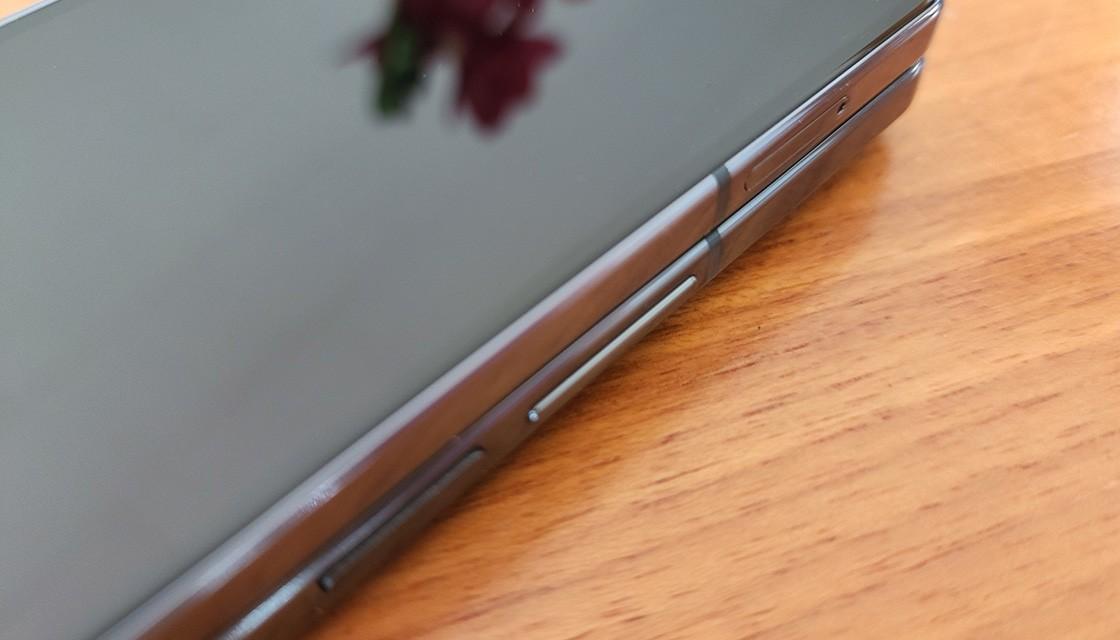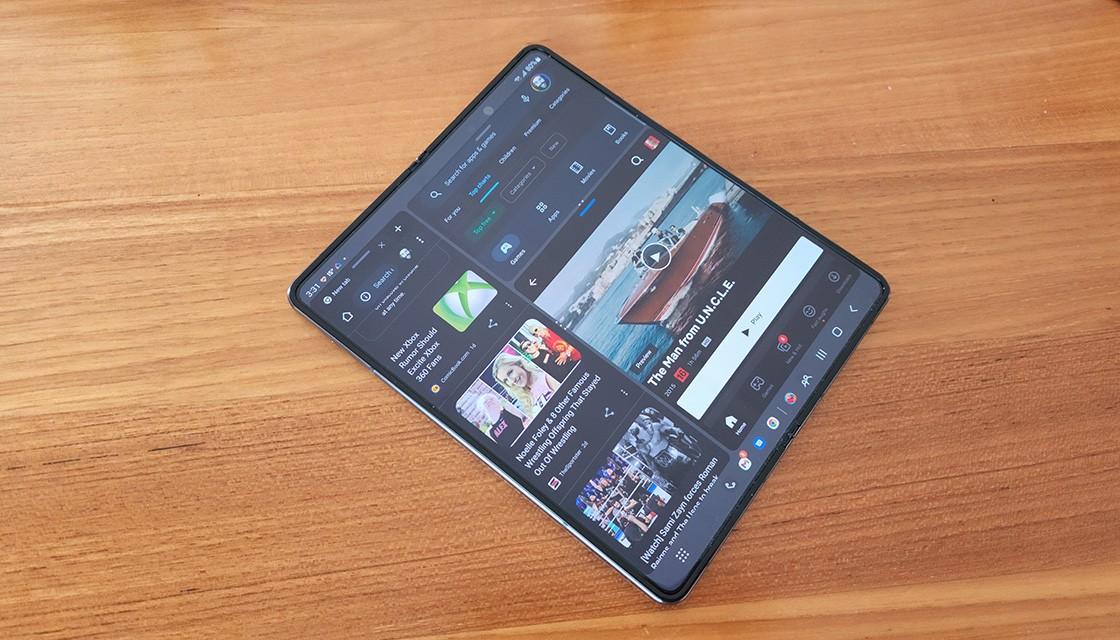
Until this time last year I couldn't see the attraction of a foldable phone.
It seemed fraught with technological difficulties and destined to be one of those devices you see in museums in 40 years.
The Samsung Galaxy Z Fold3 changed my mind. With a fold that was almost-if-not-quite invisible and a discreet under-screen front facing camera, it made me reconsider what I wanted out of a phone.
A new year brings a new iteration and so, a few weeks back, the Korean tech giant announced the launch of the updated Z Fold4
While not exactly revolutionary, there are a number of upgrades to the new Fold that promise to make it even better than the 2021 model.
So did the new phone make me consider ditching my staid old rectangular device for foldable beauty?
I've been using the Samsung Galaxy Z Fold4 for a couple of weeks now and here are my thoughts.

The good
While the processing and memory last year indicated the Fold should be considered a top-end phone, the cameras stopped it from being considered a flagship model.
That's changed this time around with a massive boost in the main camera for the Fold4. It has a 50MP camera replacing the ordinary, outdated 12MP lens on offer the last two years.
It's not quite up there with the 108MP camera on the S22 Ultra, but you're still getting bloody good pictures now instead of three-year-old tech that impresses no-one.
The one letdown may be the under-screen camera. It's still just 4MP and really isn't up to much. It was out of date last year, this year more so. I'd use the 10MP one on the folded front screen if I needed to.

However, the processor and memory this year are excellent again, with 12GB RAM as standard, combined with the newest Qualcomm Snapdragon 8+ Gen 1 chip ensuring it's quick, lag-free and as good as anything else out there on the market.
When unfolded, the screen is just beautiful. At 155mm x 130mm it's not quite square but it's so different from everything else out there you can't help but stare in wonder.
With an improved 1200 nits of peak brightness there's no fear about using it in bright daylight or in bed while everyone else is sleeping.
The 120Hz refresh rate and the 1812x2176px resolution makes the screen ideal for many different applications and smooth scrolling. Whether that's playing games, watching media, or writing notes it's just a great experience.

It truly feels like a hybrid device, capable of keeping the user entertained while packing enough punch that you can use Samsung DeX to make it usable in the office as a desktop stand-in.
That's aided with the new Android 12L software, which introduces a new Windows-like taskbar and much better multitasking options.
I loved being able to hold onto an icon, drag up to the screen and it would open with whatever else is already on the screen. If you've got better eyesight than me, you can even do it with a third app.
Combined with the ability to change the window sizes easily, it really is a game-changer.
It's also compatible with Samsung's stand-out S-Pen stylus, although you'll have to fork out extra for one. I do love handwritten notes and I'd be seriously tempted if I bought the phone.
The battery is also better this year with a 4400mAh option in there. Yes, I would have preferred a 5000mAh battery; but you're still going to get more than a day's use of the device.
If you do feel like you're running out of juice, then fast charging (with your own fast charger - there's still not one in the box!) at 25W will give you around 50 percent of battery in about 30 minutes.

Other things to look out for?
The stereo speakers are pretty good if you're wanting to listen to music out loud - just don't do it on the bus or train, though, please.
It's also IPX8 water resistant meaning you drop it in fresh water up to 1.5m deep, it should be able to stay there for up to 30 minutes without causing a malfunction. You won't believe how many times I've knocked a phone in the sink by accident, so this makes me happy.
I also am pretty good at dropping them on the floor. The Gorilla Glass Victus Plus front and back plus aluminium frame should mean a hardy device that survives for an extended period of time.
The bad
There's nothing inherently bad about the Galaxy Z Fold4, but some things are less than ideal.
And to be fair, these kinds of issues should be expected from a device which pushes the boundaries of what a mobile phone is.
First of all, despite being slightly thinner and lighter than last year's model, it's still pretty bulky compared to most phones.

When you're holding it unfolded in two hands it doesn't necessarily feel heavy or thick - but when you fold it to put in your pocket, the smaller-sized screen and the double thickness suddenly feels very noticeable.
I'm also not a fan of just using the front screen. The quality is fine, but it's too narrow for my liking.
If I'm quickly checking a notification it's passable, but I can't think of anything substantial I'd do just on the front screen.
I'm actually not sure what that front screen is for. Is it there to be completely usable or there just to give you a way of using it without putting undue pressure on the hinges by unfolding and folding all the time?
On that, questions still have to be answered regarding the longevity of such devices.
While both the screen and the hinges are stronger this time around it remains to be seen how the phone stands up to being opened and closed hundreds of times every day, for years on end.
The final thing that stings a little is the lack of optimisation of apps. Yes, this isn't really Samsung's fault and will improve over time, so I consider it one of the perils of being an early adopter.

But it can be a bit annoying when apps don't take advantage of the full screen or the foldable functionality.
Of course, even with those flaws, this kind of out-there tech doesn't come cheap. Which is a whole other issue...
The verdict
There's no doubting the Galaxy Z Fold4 is an extraordinary device, but that comes with a massive price tag.
It's on sale for around $150 more than last year's base model at $2849 for 256GB of storage.
You can pick up some pre-order deals that will get you a discount, but you're still going to be forking out a lot.
I suspect for those who like to do so, that price tag might not be a big problem - however it indicates to me that the technology still isn't quite ready for the mainstream.

Anything that costs the best part of three grand is going to have a limited reach and until that drops that's not going to change.
Technology gets cheaper as it gets older, but some good old-fashioned competition could do the same.
There were rumours earlier in August that Oppo was preparing to launch a new version of its foldable phone worldwide, having previously only made it available in China.
If that does make it to Aotearoa, I expect to find out for sure if foldable phones are the future - or if they will always be niche.
All of that aside, if you're in the market for a hybrid work/personal device that is an absolute pleasure to use (when unfolded), there really is nothing like the Galaxy Z Fold4.

When I switched back to my old phone, I seriously missed that massive screen. Suddenly multi-tasking became impossible, playing games became less fun and taking notes forced me into using a tiny keyboard again.
My tip? If you don't want to go green with envy, don't try one out. Because once you have, you'll compare everything else to it.
I finished last year's review saying I wanted one. It won't surprise you to know I STILL want one.
Newshub was supplied with a Samsung Galaxy Z Fold4 for this review.



